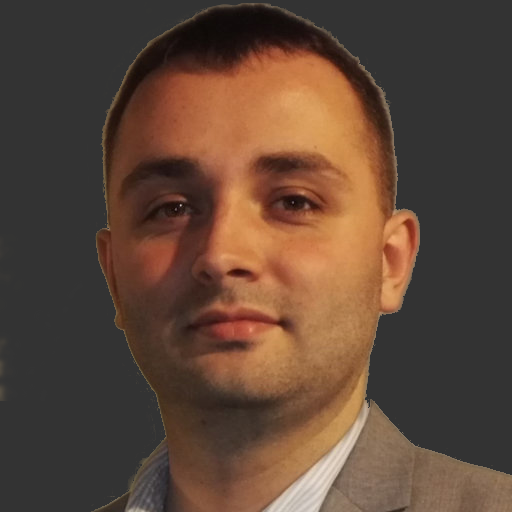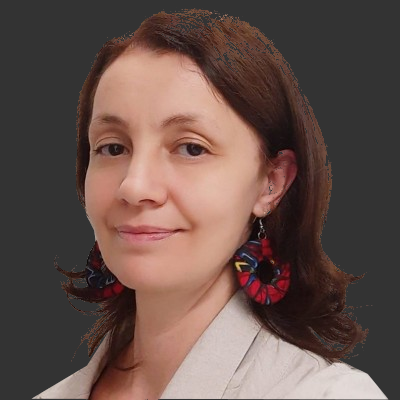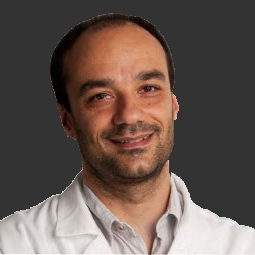HIGH-THROUGHPUT BIOLOGY
POSTGRADUATE
PROGRAM
Be at the forefront of modern biology!
Be at the forefront of modern biology!
High-Throughput methods are becoming an everyday part of biology in industry and academia alike. Be part of the next wave and gain invaluble knowledve in topics like Laboratory Automation, Bioanalytics, Bioinformatics and Biodata Analysis.
Two-semester program
HUF 350.000 (cca EUR 890) /semester
Apply with BSc/MSc degree
Learn how to automate large scale laboratory and biodata processing tasks.
The aim of the programme is to train and prepare professionals with expertise to design and evaluate large scale biological experiments using state of the art instruments and robotic systems. Current trends in the biological sciences in both industry and academia show that high throughput methods are increasingly important. Today diagnostic and bioanalitics facilities are highly automated using liquid handling robots and high throughput instruments. Industrial and research laboratories use advanced instruments like microscopes, spectrophotometers, mass spectrometers that are capable of carrying out large scale experiments in an automated fashion.
Our goal is to prepare our students to take part in these advances. The training will emphasize on topics like modern bioanalytics, microscopy, laboratory automation, and bioinformatics. During the program participants will also learn the fundamentals of programming and data science starting from basic concepts, to more advanced topics using Python and R.
KEY FOCUS AREAS
Bioanalytics
Laboratory Automation
Microscopy
Data Science
Bioinformatics
Genomics
Subjects
First semester
Course Description:
Analytical methods are essential tools in the field of modern biosciences. The goal of this course is to give an in-depth overview of the field of bioanalytics and molecular diagnostics used in diagnostic laboratories. Bioanalytics aims to give qualitative or quantitative information on cellular and molecular components in tissues and biological fluids. Molecular components can be lipids, nucleic acids, proteins, or any other molecule of interest. During this course, we will see in-depth how biological samples are processed and analyzed using various methods like centrifugation, spectrophotometrics, staining techniques, culture techniques, DNA extraction, gel electrophoresis, nucleic acid amplification, sequencing, proteomics, Western Blot and ELISA.
Literature:
- Lottspeich, F., & Engels, J. W. (Eds.). (2018). Bioanalytics: Analytical Methods and Concepts in Biochemistry and Molecular Biology.
- Buszewski, B., & Baranowska, I. (Eds.). (2022). Handbook of Bioanalytics. Springer Cham.
- Bruslind, L. (2020). General Microbiology – 1st Edition. Oregon State University.
Course Description:
The main goal of the course is to give a good general overview of optical methods used in the fields of biological sciences. Biophotonics harnesses the interaction of light and biological matter from the level of single molecules and cells to tissues to gather important biological insights. Besides giving students a good foundation in optics, the course will focus on topics like spectroscopy, microscopy, biosensors, sequencing, and the application of fluorescence in biology. The course will have a special emphasis on high-throughput methods and biomedical applications.
Literature:
Lorenzo Pavesi, Philippe M. Fauchet, Biophotonics (Springer, 2008,ISBN: 978-3-540-76782-4)
Gerd Keiser, Biophotonics: Concepts to Applications (Wiley, 2018, ISBN: 9789811092893 )
Murphy, D. B., Fundamentals of light microscopy and electronic imaging. 2nd ed. (Wiley-Liss, 2012, ISBN: 978-0-471-69214-0).
Jenkins, F. A. & White, H. E. Fundamentals of optics. 4th Edition (McGraw-Hill, 2001, ISBN 0072561912).
Course Description:
The aim of this course is to give a solid introduction to students to laboratory automation. Laboratory automation is a dynamically growing field in today’s biology laboratories. Science is constantly driven to gain more and more data. In the age of high throughput biology when a huge number of samples has to be analyzed reproducibly, automation is insurmountable. Students in the course will get a thorough introduction to the mechatronic systems used in laboratory automation systems and robotics. A special emphasis is given to the liquid handling systems as they are currently the most widely used laboratory automation systems.
Literature:
Kerstin Thurow, Steffen Junginger, Devices and Systems for Laboratory Automation 1st Edition, Wiley-VCH (2022), ISBN: 978-3527348329
Matheus C. Carvalho, Laboratory Automation: Made easy with AutoIt 1st Edition,Wiley-VCH, 2016, ISBN:978-3527341580.
Moore John H, Davis Christopher C., Coplan Michael A., Greer Sandra C. Building Scientific Apparatus. Cambridge University Press, 2009.
Godfrey Onwubolu, Mechatronics Principles and Applications. Cambridge University Press, 2009.
Course Description:
The goal of this course is to give practical knowledge in laboratory fundamentals. Students will gain knowledge in the inner workings of a molecular biology laboratory. The focus of the course is on bioanalytical methods. Students will take part in complex projects tailored to help them deepen their knowledge. They will learn about laboratory techniques like PCR, DNA/RNA isolation, microscopy, and spectroscopy (UV/VIS and fluorescent).
Literature:
- Andreas Hofmann, Samuel Clokie, Wilson and Walker’s Principles and Techniques of Biochemistry and Molecular Biology,Cambridge Univ. Press (2018).
- Stefan Surzycki, Basic Techniques in Molecular Biology, Springer Verlag (2000).
Course Description:
The purpose of the course is to provide an introduction to Python-based programming. Students learn the basics of programming through Data Science applications. Participants are introduced to the syntactic and semantic basics of Python 3 and learn about basic data types, variables, loops, and branches, and the basics of file handling. After laying down the foundations students will be introduced to the most important Python packages such as Numpy, Pandas, and Matlibplot. For their coursework, students will be introduced to different development environments (Anaconda, Jupyter, Colab) and concepts like virtual environments.
Literature:
- Allen B. Downey, Think Python: How to Think Like a Computer Scientist, 2nd edition, O’Reilly (2015) ISBN: 978-1491939369
- Wes McKinney, Python for Data Analysis: Data Wrangling with pandas, NumPy, and Jupyter 3rd Edition, O’Reilly (2022) ISBN:978-1098104030
Course Description:
The subject is a theoretical and practical introduction to bioinformatics. During the course, the theoretical background of the scientific field will be discussed and the students will learn about some important application areas of informatics in biology, with particular attention to the analysis of DNA and protein sequences. They delve into the basic concepts of bioinformatics (e.g. similarity, similarity measures, data aggregation, projection), alignment techniques (local, global, pairwise, multiple), similarity search (BLAST), and phylogenetics. They learn how to use some important bioinformatics databases (e.g. NCBI services). Finally, they will be introduced to the basic concepts of next-generation sequencing (NGS) and functional genomics, the associated typical bioinformatics tasks (e.g.: sequence assembly, annotation, variant search).
Literature:
- Arthur M. Lesk: Introduction to Bioinformatics, 4e, Oxford University Press, 2013, ISBN 9780199651566
- David W. Mount: Bioinformatics: Sequence and Genome Analysis, 2e, Cold Spring Harbor, 2004, ISBN 0- 879-69712-1
- Phillip Compeau, Pavel Pevzner, Bioinformatics Algorithms, 3e, Active Learning Publishers, ISBN 978-0990374633
Course Description:
The objective of this course is to cover quantitative methods that can be used to model diverse biological processes, from cell and molecular biology to evolutionary biology. The topics are discussed by researchers who actively pursue quantitative topics in biology either from the experimental or theoretical perspective. Lecturers discuss topics such as single-cell methods, microfluidics, evolutionary experiments, modeling of cell movement, synthetic biology, or population biology.
Literature:
Covert, Markus. (2017). Fundamentals of Systems Biology: From Synthetic Circuits to Whole-cell Models. 10.4324/9781315222615.
Alon, Uri (2019). An introduction to systems biology: design principles of biological circuits. 2nd ed Chapman and Hall/CRC. ISBN 9781439837177
Wilkinson, D. J. (2018). Stochastic modelling for systems biology. Chapman and Hall/CRC. eISBN:9781351000918.
Second Semester
Course Description:
The aim of the subject is to introduce students to laboratory automation and related methods through practical examples. Students can learn about modern liquid handling systems, high throughput bioanalytical methods and automated microscopy by solving project tasks in small groups. In addition, they also learn about the basics of liquid handling in an industrial environment.
Literature:
Kerstin Thurow, Steffen Junginger, Devices and Systems for Laboratory Automation 1st Edition, Wiley-VCH (2022), ISBN: 978-3527348329
- Matheus C. Carvalho, Laboratory Automation: Made easy with AutoIt 1st Edition,Wiley-VCH, 2016, ISBN:978-3527341580.
- Moore John H, Davis Christopher C., Coplan Michael A., Greer Sandra C. Building Scientific Apparatus. Cambridge University Press, 2009.
- Godfrey Onwubolu, Mechatronics Principles and Applications. Cambridge University Press, 2009.
- Almada, P., Pereira, P.M., Culley, S. et al. Automating multimodal microscopy with NanoJ-Fluidics. Nat Commun 10, 1223 (2019).
- Andreas Hofmann, Samuel Clokie, Wilson and Walker’s Principles and Techniques of Biochemistry and Molecular Biology, 8th edition, Cambridge University Press (2018), ISBN: 9781316614761
- Stefan Surzycki, Basic Techniques in Molecular Biology, Springer Verlag (2000) ISBN: 978-3540666783
Course Description:
The aim of the course is for students to become familiar with current genomic and bioinformatics topics, which are crucial in modern biological and medical sciences. Building on their basic knowledge of bioinformatics, the students gain insight into the most modern omics methods such as transcriptomics and single cell methods. Students will get insights into experimental and theoretical questions of each topic.
Literature:
- Arthur M. Lesk: Introduction to Bioinformatics, 4e, Oxford University Press, 2013, ISBN 9780199651566
- Arthur M. Lesk, Introduction to Genomics, 3e, Oxford University Press, 2017, ISBN, 0198754833.
- Raffaele A. Calogero, Vladimir Benes, Single Cell Transcriptomics, Humana Press, 2023, ISBN:978-1071627587
Course Description:
The aim of the course is to introduce students to the basics of mathematical statistics related to the biological sciences. The course provides students with methodological tools to analyze their experimental data, as well as to understand the methodologies of the current literature. In the practical part, students learn how to use the R programming language to analyze scientific data.
Literature:
Forthofer, R.N. and Lee E.S.: Biostatistics, Academic Press, San Diego, 1995
Course Description:
Presenting measured data and complex results emerges as a specific new problem in the lifesciences. How can we design effective pictures from our numeric or textual data? How can we compact millions of data points into a pattern or trend presentable in a single picture? This course focuses on biological sequences, genomes, clinical data, metagenomes, geneexpressions, 3D molecular data and (brain) networks and small molecules such as pharmacons. The goal is to give students a knowled that enables them to choose the right tools and to get acquainted with their advantages and disadvantages.
Literature:
- Claus Wilke , Fundamentals of Data Visualization: A Primer on Making Informative and Compelling Figures, O’Reilly Media, 2019, ISBN:978-1492031086
Course Description:
The goal of this course is to highlight recent results in systems biology-oriented applications.Local and guest lecturers will present the basic concepts and advanced researchtopics in key directions of systems biology. Discussed topics include:biological networks, network motifs, stochastic simulations, logical modelling,whole-cell models, metabolic networks, circadian rhythms, riboswitches, cancer and others.
The program from last year can be found at: https://sites.google.com/view/applied-system-biology-course
Literature:
Covert, Markus. (2017). Fundamentals of Systems Biology: From Synthetic Circuits to Whole-cell Models. 10.4324/9781315222615.
Alon, Uri (2019). An introduction to systems biology: design principles of biological circuits. 2nd ed Chapman and Hall/CRC. ISBN 9781439837177.
Wilkinson, D. J. (2018). Stochastic modeling for systems biology. Chapman and Hall/CRC. eISBN:9781351000918.
Thesis Work
The Thesis Work is a capstone course where students solve a complex problem by combining the knowledgebase attained throughout the study program. It fosters independent research skills, critical thinking, and academic writing proficiency. In the first semesters, students find a thesis topic and start to develop their project beginning with a literature review and experiment design. At the end of the course, students will present their progress in a 10-15 minute presentation.
The Thesis Work is a capstone course where students solve a complex problem by combining the knowledgebase attained throughout the study program. It fosters independent research skills, critical thinking, and academic writing proficiency. Throughout the second semester, students will continue to develop their projects with the guidance of their advisor. Finally, they will start working on their thesis and final presentation for their thesis defense.
LECTURERS

Csaba István Pongor
Research Fellow
With a degree in Chemical Engineering he started his research in Biophysics using different microscopy based methods. He worked at the Nikon Center of Excellence at the Institute of Experimental Medicine (HUN-REN). Currently he is a researcher at the Sytems Biology group at the University where he develops High Throughput Methods.

Márton Hartdégen
Lecturer
With a degree in in Info-Bionics he started his research in the Microfluidics research group. He specialized in Laboratory Automation developing LAMP based pathogen detection. He has extensive experience programming Liquid Handling systems in both industrial and academic settings.

Judit Plutzer
Lecturer
As a Biologist she worked as a Senior Researcher at the Department of Environmental Health at the National Public Health Center. Her main interest is ecotoxicology and water health. Her main focus was the development of assays for different water based pathogens.

János Juhász
Assistant Professor
Being a certified bioinformatician and a member of the Pázmány ITK Bioinformatics and Systems Biology research groups, his research focuses on the bioinformatical and statistical analysis and computer modeling of microbial communities. He is involved in teaching bioinformatics, biostatistics, and computer biology courses.

Attila Csikász-Nagy
professor
With his extensive experience in systems biology, he is an internationally recognized researcher in the regulation of the cell cycle and circadian rhythm. He has more than a decade of experience in foreign teaching and research. He regularly publishes in reputable journals in his field. Currently, he represents the Budapest region in the Hungarian Biochemical Society.

Balázs Ligeti
research fellow
Head of the Pázmány ITK Neural Bioinformatics research group, an expert in molecular data processing. His research area includes the development of large-scale genomic language models and sequence representations, along with algorithms built upon them.

Andrea Ciliberto
professor
Andrea Ciliberto, a biologist expert in the mathematical modeling of biological processes, directs the Quantitative Biology of Cell Division research program at IFOM in Milano. As head of his lab his main intrest lie in the study of molecular regulatory networks using both computational and experimental approaches.

Péter Urbán
Research Fellow
He is a biologist by training who has specialized in Genomics. Currently he is a laboratory manager at the Hungarian Centre for Genomics and Bioinformatics and a resercher at the Szenthágothai Research Center at the University of Pécs. He has extensive experience in Genomics and Bioinformatics.